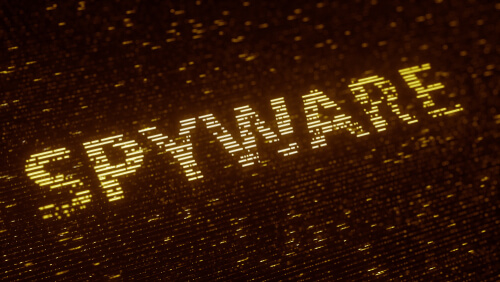Ever since the first GPS (Global Positioning Satellites) systems went live back in the early nineties, privacy experts have warned us about our diminishing rights. And while we have gained both safety and security as a result of this ability to globally track people and things, we seemed to have lost our true sense of privacy. I've been inventing devices that track these trackers for decades, mostly in an effort to assist law enforcement from becoming the victims of tracking themselves, and here is what I have learned.
It all began with GPS trackers back in 1994 when fully operational GPS systems began to emerge. Tracking valuable things on the move usually manifested itself as fleet vehicles containing hidden GPS trackers. This gave fleet managers both a way to keep an eye on potentially stolen vehicles and their own drivers at the same time. Before smartphones hit the mainstream in the mid to late 2000s, GPS trackers were expensive, bulky, and mostly relied upon users to install and fetch GPS trackers in order to see where it had been.
Smartphones emerged with their own GPS and cellular broadband connectivity, allowing users to track their hidden GPS trackers in real time. When the GPS tracker sensed movement, it would ping out to the nearest cell tower and update its whereabouts. Users could log into their account any time to see real-time positioning of their tracker. After a few days or weeks, the tracker would start to run low on power and have to be retrieved for a recharge. Suspicious spouses, insecure bosses, and a variety of criminal elements began to use GPS trackers for all kinds of surreptitious purposes.
The legality of tracking someone or something without their consent began to splinter in the U.S., with many states allowing some degree of electronic tracking without consent. By this point, smartphones had become cheap enough to be used as tracking devices by themselves. An inexpensive phone could be purchased and left in someone's bag or car for several days while an app communicates with the user's account to notify them whenever the phone is on the move. The majority of phone users simply go about their day with GPS, Wi-Fi, Bluetooth, and cellular data switched on all day. These radios are being tracked and tagged by marketers, telecom companies, and individuals in an effort to resell that data to parties willing to pay. According to a study by the Ponemon Institute, $14,000 is the average value of the personal data contained on a mobile device.
My company began developing tools to track all kinds of cellular signals legally. We never relied on metadata or any kind of saved user data. We didn't even communicate with the devices. We simply looked at the signal strength of all nearby phones and created alert systems to trigger when these signals got too strong or too close to secure areas. Sometimes our cell phone detectors were used to catch bad guys trying to wirelessly hack into a network, but many times, we are our own worst enemies, so the business of detecting and alerting to a common cell phone left in one's pocket by accident during a confidential meeting has remained a lucrative one. GPS trackers utilize the same broadband cellular networks, so while it can be tricky to detect these subtle, infrequent pulses from a tracker hidden in a vehicle, we managed to modify our cell phone detectors to do just that.
There is still no federal-wide data privacy laws, but lawmakers on both sides of the aisle have introduced a bill banning law enforcement and intelligence agencies from easily purchasing personal data use that includes location tracking, social media activity, and search history records. In the meantime, both law enforcement and criminals have not sat idly by, waiting for lawmakers to catch up. Everyone has moved onto the latest inexpensive tracker that can be hidden anywhere and track someone for up to a year.
Ever since Apple's AirTags were introduced, users have been finding new ways to protect their belongings while sometimes simultaneously violating the privacy of others. Tiny BLE (Bluetooth Low Energy) tags are being placed in people's vehicles, pockets, bags, and other items on the move all the time. Mostly, these are harmless trackers, but an increase in stalking, theft and even murder has resulted over the past few years, and where tech companies have failed to respond, victims are looking for ways to fight back.
My company developed a BLE tag detector that can sit in your pocket all day that will immediately alert you when any hidden BLE tag is nearby. Apple has built some smarts into their AirTag and its vast Find My network of devices, but these alerts do not always arrive quick enough to help someone before a stalking escalates into a confrontation or worse.
By detecting a special sequence of packets, our detectors identify hidden tags and even help users to find them using signal strength coupled with a bit of direction finding. This might not be necessary if you're digging through your own pockets to discover a hidden tag, but one can spend large amounts of time searching the inside and outside of a large automobile every day and still fail to find that tiny AirTag hidden under a passenger seat. This is where our product solutions can really shine for professionals tasked with providing security for events and executive protection of important individuals.
GPS trackers and BLE tags rely on cellular networks and millions of devices around the world that serve as a giant mesh network. So one would assume that our privacy and security remain intact in areas where wireless activity is virtually non-existent. After all, 75% of the earth is ocean where most cellular signals cannot reach. Throw in wilderness and desert and you have huge, uninhabited areas where vehicles and people simply cannot be tracked, right? Not so fast.
Thousands of satellites canvas the earth's upper and lower atmospheres. The same technology that allows a SpaceX Starlink device to communicate with someone from the middle of the Atlantic Ocean also allows others to know exactly where that tracking device is located. This might not seem like such a threat until we consider a more dangerous target to track. The U.S. Navy relies upon the vastness of the world's oceans to keep their missions and destinations a secret from state enemies. But what happens when these ships can be tracked all over the world by enemies of the U.S. Navy?
In fact, these enemies could use the United States' own satellite technology against them. Satellite trackers do not rely upon conventional cellular bands to transmit their whereabouts. They communicate directly with satellites that orbit the Earth. It's not difficult to imagine a state enemy hiding a satellite tracker somewhere aboard a giant U.S. naval ship or even a small enemy drone dropping a payload containing an active satellite tracker. We have already been approached by concerned security experts on just this matter. My engineers and I are confident that we can not only detect nearby satellite trackers but also determine their location through some advanced triangulation.
Advanced wireless technology will always allow for tiny, tracking devices that can easily violate our privacy and security. However, the flipside to this is that this same technology also allows all kinds of wireless trackers to be detectable and locatable. Technology has a way of blurring the lines between good and bad intentions, so one of my jobs is to ensure our products help the good guys more than they could ever possibly help the bad guys.





